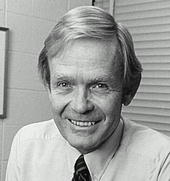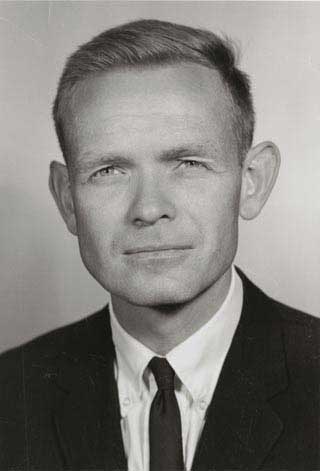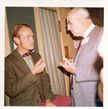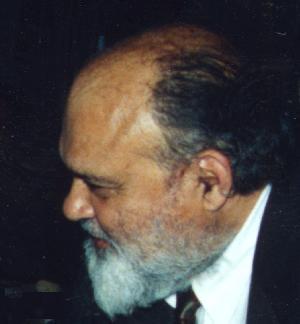Banquet Speech
40th Anniversary Symposium
1 October 2005
Computer Science, Cornell University
David Gries
INTRODUCTION
Thank you for your introductory remarks, Dean Kent Fuchs. I am glad you controlled yourself. I had told Kent that he had to be careful about what he said about me, because I would be following him.
I would like to begin by thanking the staff who helped make this celebration a reality. Kathy Carpenter, Bonnie Maine, Lana Walsh, Cindy Robinson, and Bill Hogan were all involved.
Two people in particular deserve our gratitude. Nora Balfour was our project manager. She has been busy for 6 months, thinking of things that we faculty didn’t even know had to be done. Of late it has been day and night. I hesitate to point her out because some of you might try to steal her, but, Nora, please stand and take a bow.
The wonderful 40th anniversary booklet was and produced by Stephanie Specchio. We have worked almost daily with her since the beginning of July, and it has been a pleasure. Stephanie, please stand up and take a bow.
OUR BEGINNINGS


 While we are at it, I would also like to honor to one person who hasn’t been in your line of sight too much this weekend, Dick Conway.
Dick, please stand up. Dick came to Cornell in 1949, as a freshman. He was an assistant professor first in Mechanical Engineering, then in Industrial Relations, then in Operations Research and Industrial Relations. None of them seemed to want him, so he decided to start another department, and that is why Cornell now has a Computer Science Department. After 19 years with us, he got tired of us and moved to the Johnson School of Management. He retired two years ago and spends his time taking his 39-foot sailboat in and out of the water.
While we are at it, I would also like to honor to one person who hasn’t been in your line of sight too much this weekend, Dick Conway.
Dick, please stand up. Dick came to Cornell in 1949, as a freshman. He was an assistant professor first in Mechanical Engineering, then in Industrial Relations, then in Operations Research and Industrial Relations. None of them seemed to want him, so he decided to start another department, and that is why Cornell now has a Computer Science Department. After 19 years with us, he got tired of us and moved to the Johnson School of Management. He retired two years ago and spends his time taking his 39-foot sailboat in and out of the water.
 Dick brought the first mainframe computer to Cornell, started CIT (the unit responsible for academic computing at Cornell), and developed the PL-C compiler back in the early 1970s. The other person in the picture to the right is Bob Walker, mathematician, who also had a hand in setting up CS at Cornell.
Dick brought the first mainframe computer to Cornell, started CIT (the unit responsible for academic computing at Cornell), and developed the PL-C compiler back in the early 1970s. The other person in the picture to the right is Bob Walker, mathematician, who also had a hand in setting up CS at Cornell.
I have had the pleasure of working with Dick on several things, one of which was writing a programming text, in 1973. It was good for me; it is always good to suffer. Dick, in spite of my remarks, the audience knows that I have the deepest respect for you and what you have done for the department. Thank you!
 Another person who has to be mentioned is Anil Nerode (this is added after the talk). It was Anil, Dick, and Bob who submitted a proposal to Sloan foundation to fund a new graduate CS department for 5 years, and it was Anil who wrote the charter for the new department. CS was joint between Arts & Sciences and Engineering. Anil says that he would have preferred a university-wide department. This was too radical at the time, but, in a way, he foresaw the new Faculty for Computing & Information Science. Anil was the only one at Cornell who knew the small number of computer scientists in the country at the time. His candidate for chair was Juris Hartmanis of GE, who accepted. They also hired Gerry Salton, a student of computer pioneer Howard Aiken at Harvard, and Pat Fischer, a student of logician Hartley Rogers at MIT.
Another person who has to be mentioned is Anil Nerode (this is added after the talk). It was Anil, Dick, and Bob who submitted a proposal to Sloan foundation to fund a new graduate CS department for 5 years, and it was Anil who wrote the charter for the new department. CS was joint between Arts & Sciences and Engineering. Anil says that he would have preferred a university-wide department. This was too radical at the time, but, in a way, he foresaw the new Faculty for Computing & Information Science. Anil was the only one at Cornell who knew the small number of computer scientists in the country at the time. His candidate for chair was Juris Hartmanis of GE, who accepted. They also hired Gerry Salton, a student of computer pioneer Howard Aiken at Harvard, and Pat Fischer, a student of logician Hartley Rogers at MIT.
Gerry Salton, the father of information retrieval, succumbed to cancer in the mid 1990s. However, his wife Mary, son Peter & family, and daughter Mariann & family are here with us tonight —they always come running when they hear there is going to be food. Salton's, please stand up and take a bow.
AN ABC BOOK
When wondering about what to say tonight, and how to say it, I decided to write an ABC book for the department. You know, A is for Aardvark, whatever that is; and, B is for Bunny, with a wrinkling little nose.
 (click for 476KB enlargement)
(click for 476KB enlargement)
I’m not going to read the whole book to you, because I haven’t finished it. But I will give you bits and pieces of it.


 While we are at it, I would also like to honor to one person who hasn’t been in your line of sight too much this weekend, Dick Conway.
Dick, please stand up. Dick came to Cornell in 1949, as a freshman. He was an assistant professor first in Mechanical Engineering, then in Industrial Relations, then in Operations Research and Industrial Relations. None of them seemed to want him, so he decided to start another department, and that is why Cornell now has a Computer Science Department. After 19 years with us, he got tired of us and moved to the Johnson School of Management. He retired two years ago and spends his time taking his 39-foot sailboat in and out of the water.
While we are at it, I would also like to honor to one person who hasn’t been in your line of sight too much this weekend, Dick Conway.
Dick, please stand up. Dick came to Cornell in 1949, as a freshman. He was an assistant professor first in Mechanical Engineering, then in Industrial Relations, then in Operations Research and Industrial Relations. None of them seemed to want him, so he decided to start another department, and that is why Cornell now has a Computer Science Department. After 19 years with us, he got tired of us and moved to the Johnson School of Management. He retired two years ago and spends his time taking his 39-foot sailboat in and out of the water. 

